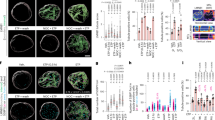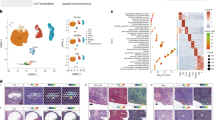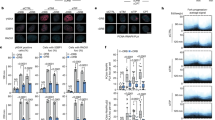Abstract
The p53 protein appeared to be involved in both spermatogonial cell proliferation and radiation response. During normal spermatogenesis in the mouse, spermatogonia do not express p53, as analyzed by immunohistochemistry. However, after a dose of 4 Gy of X-rays, a distinct p53 staining was present in spermatogonia, suggesting that, in contrast to other reports, p53 does have a role in spermatogonia. To determine the possible role of p53 in spermatogonia, histological analysis was performed in testes of both p53 knock out C57BL/6 and FvB mice. The results indicate that p53 is an important factor in normal spermatogonial cell production as well as in the regulation of apoptosis after DNA damage. First, p53 knock out mouse testes contained about 50% higher numbers of A1 spermatogonia, indicating that the production of differentiating type spermatogonia by the undifferentiated spermatogonia is enhanced in these mice. Second, 10 days after a dose of 5 Gy of X-rays, in the p53 knock out testes, increased numbers of giant sized spermatogonial stem cells were found, indicating disturbance of the apoptotic process in these cells. Third, in the p53 knock out testis, the differentiating A2-B spermatogonia are more radioresistant compared to their wild-type controls, indicating that p53 is partly indispensable in the removal of lethally irradiated differentiating type spermatogonia. In accordance with our immunohistochemical data, Western analysis showed that levels of p53 are increased in total adult testis lysates after irradiation. These data show that p53 is important in the regulation of cell production during normal spermatogenesis either by regulation of cell proliferation or, more likely, by regulating the apoptotic process in spermatogonia. Furthermore, after irradiation, p53 is important in the removal of lethally damaged spermatogonia.
Similar content being viewed by others
Article PDF
Author information
Authors and Affiliations
Corresponding author
Additional information
Edited by E. Yonish-Rouach
Rights and permissions
About this article
Cite this article
Beumer, T., Roepers-Gajadien, H., Gademan, I. et al. The role of the tumor suppressor p53 in spermatogenesis. Cell Death Differ 5, 669–677 (1998). https://doi.org/10.1038/sj.cdd.4400396
Received:
Revised:
Accepted:
Published:
Issue Date:
DOI: https://doi.org/10.1038/sj.cdd.4400396
Keywords
This article is cited by
-
TSPY1 suppresses USP7-mediated p53 function and promotes spermatogonial proliferation
Cell Death & Disease (2018)
-
The hot-spot p53R172H mutant promotes formation of giant spermatogonia triggered by DNA damage
Oncogene (2017)
-
Knockout of BRD7 results in impaired spermatogenesis and male infertility
Scientific Reports (2016)
-
The Magea gene cluster regulates male germ cell apoptosis without affecting the fertility in mice
Scientific Reports (2016)
-
Distinct downstream targets manifest p53-dependent pathologies in mice
Oncogene (2016)



